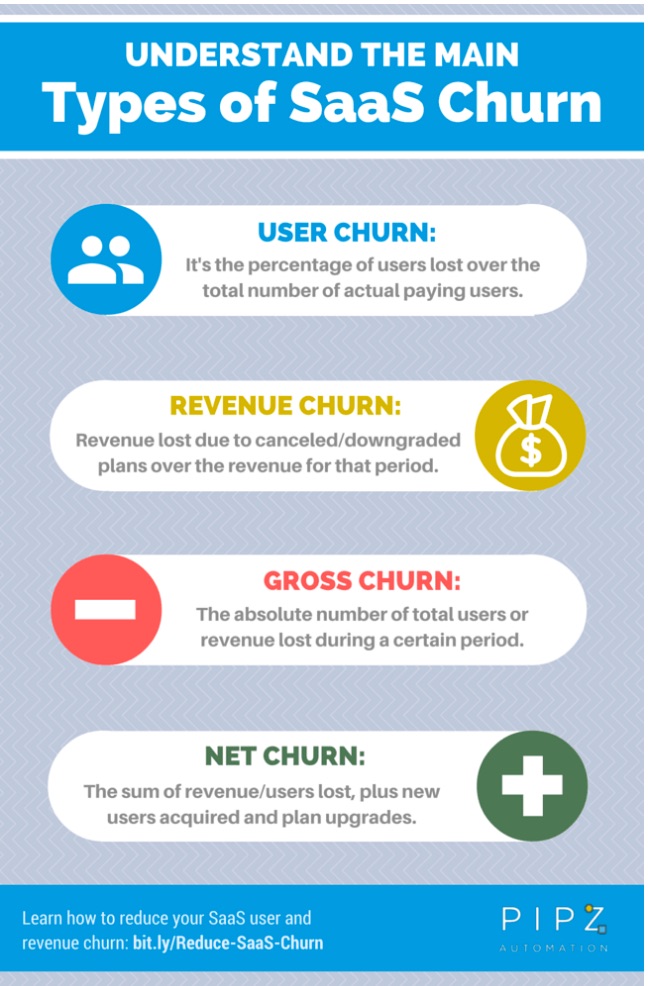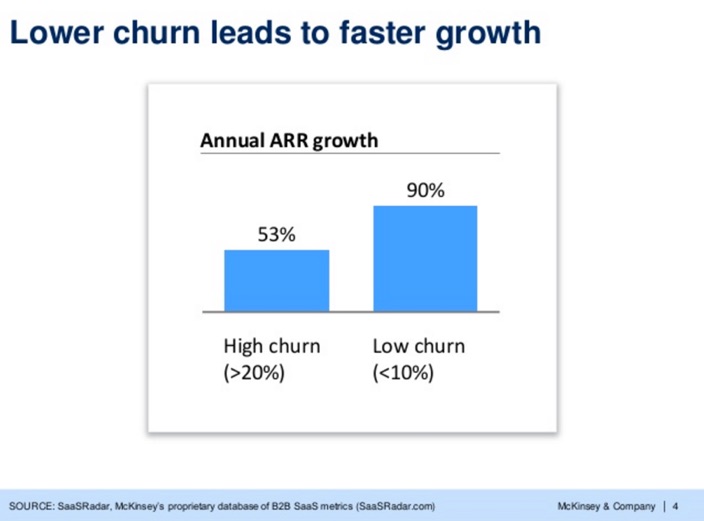You love your customers.
So, when they decide not to renew, it affects your SaaS business. It takes a lot of resources to acquire new buyers.
But is all churn bad? What are the underlying reasons for your customer's departure?
Consumers churn for several reasons, including price and customer service. Therefore, it varies based on the sector.
“Customer churn rates that could be considered fantastic for one business might be atrocious for another. Why? Because not all business models are the same, and even companies with similar business models might define churn differently,” writes Dan Shewan, a web content specialist at WordStream.
Let's explore when churn might be acceptable for your company.
Churn: Different Schools of Thought
In the SaaS industry, churn is a debatable issue. The Quora community has discussed more than 180 questions on the subject.
Several methods exist to calculate churn. Managers possess multiple strategies to improve the metric. And on top of that, there are different types of churn.

Top-level leaders perceive churn differently. Some experts believe churn is a natural part of your business operations. Customers will come and go.
They suggest setting a churn benchmark. Then, using it as a guide for future growth.
“[D]on't try and compare the churn of your SaaS product to anyone else. Rather, try and get a feel for what you think the 'background' level of churn should be within your business,” states James Barnes, co-founder of StatusCake.com.
Other thought leaders see churn as preventable. They would advise that your team take a proactive approach to retaining buyers.
“Considering all the ways churn hurts a company, there doesn't seem to be any reason… that you should sit back and just accept churn as either inevitable or a good thing,” writes Lincoln Murphy, founder of Sixteen Ventures.
So, it begs the question: Is churn always bad?
It really depends on the school of thought, the circumstances, and your company.
Examine these three particular situations:
1. Wrong Customer Fit
We assume that every buyer fits our SaaS ideal customer profile.
Why? Because the person actually bought our product.
But that's not necessarily true. Sales funnels are flawed.
Customers can churn because they weren't properly onboarded. So, the person gets frustrated with the product and leaves.
Customers can churn because they were misinformed about product features. The lack of a specific function renders your service useless to them.
Some leaders will suggest that all customers won't fit your buyer persona.
And despite your customer success team's efforts, the buyer will never see the value of your product. To the customer, the cost will always outweigh the service.
Therefore, don't fit a square peg in a round hole. Instead, focus on the buyers that meet your criteria.
On the contrary, other experts will encourage your team to upgrade your funnel. Research shows that “67% of customer churn is preventable if the customer issue was resolved at the first engagement.” So, execute strategies to fill the gaps in your sales process.
Taking it a step further, you may even want to improve your product for those “wrong customers.” Develop ways to meet their needs.
“If a customer insists on something untenable, like a crazy new feature or a 24-hour on-call customer service, you can't appease them. But if this is happening over and over, you need to evaluate your customer success team and see if they're helping clients unlock more value from your product,” says Steli Efti, CEO of Close.io.
Not every customer will find your product valuable. Before accepting that notion, think about how you can reach their desired outcome.
2. Customers Go Bankrupt
In the B2B market, businesses can dissolve unexpectedly. This leaves your company without a client.
And what if your customer merges with another company? Well, the go-to person handling vendor relations may change. And the new company may decide to stick with your competitor.
How can your team recover?
A few professionals will recommend calculating these situations in your current churn rates. Business ebbs and flows. You can't predict when a company will go out of business. Too many unknown factors exist.
However, some experts feel that you can plan ahead for these incidents.
Start by targeting a viable customer base. For example, some industries are well known for lacking stability. They will continuously swap merchants.
“SMB customers tend to go out of business more frequently than bigger businesses. They switch products more regularly because switching costs are low. They simply aren't as reliable customers as bigger companies,” writes Tomasz Tunguz, a venture capitalist at Redpoint.

If your customer is acquired, use it as an opportunity to pitch the new buyer. That means showing value beyond the commoditized services. Compete on customer experience.
“Adding value beyond your bare product or service creates stickiness. It creates an environment where your customers start depending on you for reasons other than just the product or service you deliver,” says Ross Beard, former marketing manager at Client Heartbeat.
Your customer may become insolvent. Choose how your team will deal with it.
3. Competing in a Transient Market
Trends and fads have an effect on your churn rates.
Some companies operate in environments where customers discontinue services today, but renew again in two months.
“In a transient market, churn is expected because customers change their minds frequently, their situations change and they have to lower costs and then they get more money and they come back…”
Many experts will consider it the nature of the business. Therefore, monitor your cash flow and learn when your customers will leave and return.
However, there's another point of view. Make your product an integral part of your customer's life. Whether that means offering 24/7 support or loyalty rewards, give buyers a reason not to cancel.
The Baremetrics team recommends the following:
“Another way to make your product indispensable is with multi-user support. Adding this feature means your product becomes part of an entire company or department's workflow, making it much harder to part with.”
The world of business is volatile. Either recognize it as the cost of doing business or create ways to move around it.
Churn Still Matters
Expect customers to discontinue their services with you. Whether you consider churn good or bad, it will remain a staple in your SaaS business.
“Churn isn't going away. And that's okay, if you're willing to commit to churn reduction as a key element of your conversion rate optimization strategy. Just as you optimize your software and marketing, you can optimize keeping customers loyal and happy,” states Corey Pemberton, a copywriter and marketer.
Work with your team to improve your churn rates. Research uncovers that lower churn can boost your company's growth.
And that's what you desire. The chance to gain more market share and provide more value to your customers.

More often than not, churn isn't the fault of the customer. According to an Accenture study, “customer service, not price, remains the top cause of customer churn.”
Change how you serve your buyers. Reform your competitive advantages. Listen to your customers' complaints.
Serial entrepreneur David Skok says, “Ask yourself if you know what are the key features that make your product sticky, and then use measurements of customer engagement to see which customers are not using those features.”
Churn is here to stay. Adjust your long-term strategy accordingly.
Monitor Your Churn Rates
Some thought leaders believe churn is unavoidable. And others think you need to combat churn no matter the situation.
Find buyers that fit your ideal customer persona. Diversify the industries where you sell products. And find alternative ways to mitigate churn before it happens.
Good churn? Bad churn? Just do what's best for your SaaS company.
About the Author: Shayla Price lives at the intersection of digital marketing, technology and social responsibility. Connect with her on Twitter @shaylaprice.
No comments:
Post a Comment